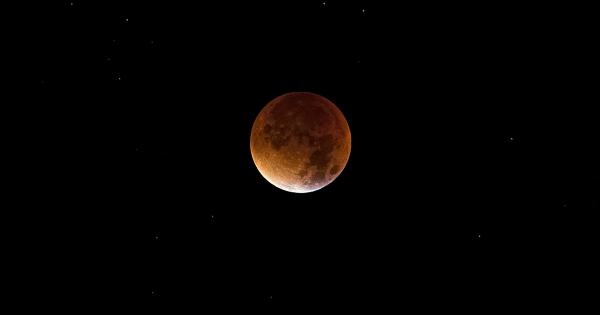A solar eclipse is a fascinating celestial phenomenon that occurs when the Moon passes between the Sun and the Earth, partially or completely blocking the Sun’s light.
As this dramatic event takes place, it has several effects on our view and the surrounding environment. In this article, we will explore the various impacts of a solar eclipse, from the visual spectacle it presents to the unique scientific opportunities it offers.
The Visual Spectacle of a Solar Eclipse
A solar eclipse is a visually stunning celestial event that captivates people all over the world. During a total solar eclipse, when the Moon completely obscures the Sun, the daytime sky darkens, and the stars become visible.
The temperature drops, and a feeling of awe and wonder fills the air as day turns into an eerie twilight. The breathtaking sight of the Sun’s corona, the outermost part of its atmosphere, stretching out and shimmering around the darkened Moon is truly awe-inspiring.
The Impact on Wildlife
While humans marvel at the beauty of a solar eclipse, wildlife also reacts to this extraordinary occurrence. Animals and birds often exhibit peculiar behavior during an eclipse. Nocturnal animals may become active, mistaking the twilight for nighttime.
Birds might stop singing, thinking that evening has arrived. This sudden change in light can interrupt their regular patterns and create confusion.
Some experts suggest that during a solar eclipse, diurnal (daytime) animals may seek shelter, believing it to be nightfall. Certain species that rely on the Sun for navigation or feeding patterns might be affected.
Changes in temperature, reduced light, and altered landmarks can disrupt natural cycles and potentially impact feeding, mating, or migration patterns.
Effects on Human Perception
During a solar eclipse, our perception of the world around us undergoes significant changes. As the sky darkens, colors may appear more vibrant, and shadows become sharper.
The bending of light around the edges of the Moon known as the “Diamond Ring Effect” and the appearance of the Sun’s corona create a surreal visual experience. These extraordinary sights present a unique opportunity for photographers, artists, and observers to capture the magnificence of nature.
Scientific Opportunities and Discoveries
Solar eclipses provide scientists with invaluable research opportunities.
By studying the Sun’s corona, which is usually invisible due to the overpowering brightness of the Sun, scientists can gain insights into the outer layers of the Sun’s atmosphere. They can observe and analyze its structure, temperature, and dynamic behavior, leading to a better understanding of solar physics.
During a total solar eclipse, researchers can also investigate the effects on Earth’s atmosphere.
The sudden decrease in solar radiation causes temperature variations and alters atmospheric conditions, such as wind patterns and the mixing of the different layers of the atmosphere. Studying these changes helps scientists improve climate models and our understanding of Earth’s atmospheric dynamics.
Viewing Safety and Precautions
It is crucial to take appropriate precautions when viewing a solar eclipse to protect your eyes. Looking directly at the Sun, even during an eclipse, can cause severe eye damage or permanent vision loss.
Special eclipse glasses or solar filters must be used to safely observe this celestial event. These protective eyewear items are designed to filter out harmful ultraviolet and infrared rays, allowing only a safe amount of sunlight to enter the eyes.
Alternatively, indirect viewing methods, such as using a pinhole projector or projecting the image onto a surface, can also provide a safe way to witness the eclipse.
Remember to avoid looking at the Sun through regular sunglasses, camera lenses, or binoculars, as they do not offer adequate protection.
Historical and Cultural Significance
Solar eclipses have fascinated humans for thousands of years, often carrying significant cultural and historical importance. Ancient civilizations believed that a solar eclipse was a sign of impending doom or a disruption in the natural order.
Cultures worldwide developed various myths and tales to explain this celestial event, reflecting their beliefs and values.
Throughout history, solar eclipses have been observed and recorded, serving as milestones in astronomical research.
The ability to predict and accurately calculate the occurrence of an eclipse led to advancements in our understanding of the geometry of the Solar System and celestial mechanics. Today, solar eclipses continue to inspire scientific curiosity and provide opportunities to engage the public in astronomical observations.
Conclusion
A solar eclipse is a mesmerizing event that enthralls people from all walks of life.
From the visual spectacle it creates to the impacts on wildlife behavior and human perception, a solar eclipse is a unique experience that is both beautiful and scientifically valuable. Witnessing this natural wonder inspires awe and wonder, reminding us of the vastness and complexity of our universe.































